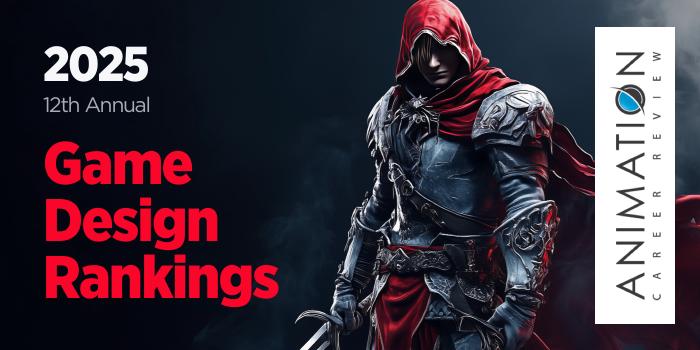The Donald Bren School of Information and Computer Sciences (ICS) at University of California, Irvine (UC Irvine or UCI) began as an academic department in 1968. When it opened, the department was the first of its kind in the UC system. In 2004 the school was named for benefactor and billionaire businessman Donald Leroy Bren.
The only computing-focused school in the UC system, the Donald Bren School houses three departments that enroll more than 2,000 undergraduates and 400+ graduate students each year. Departments include Computer Science, Informatics, and Statistics. Across departments, students can earn degrees in areas such as informatics, computer science, software engineering, and game design.
The Department of Informatics houses UCI’s game design programs. Options include the Game Design and Interactive Media (GDIM) BS; and the Computer Science (CS) BS, MS, and PhD programs. Across pathways, students benefit from mentorships; courses taught by globally-recognized industry experts; and partnerships with major studios such as Electronic Arts (EA), Disney, Riot Games, Blizzard Entertainment, Cartoon Network, Tencent Games, and Obsidian Entertainment.
Launched as the Computer Game Science major in 2011, the GDIM BS provides hands-on courses that explore areas such game programming, visual design, game design and development, interactive storytelling, data science, and game studies. This 176 credit hour program also explores emerging technologies such as mobile games, tabletop games, and augmented and virtual reality (AR/VR).
Course examples for the UCI GDIM BS include Coding in Game Engines; Roleplaying and Improvisational Play; Game Technologies and Interactive Media; Storytelling for Interactive Media; Game Engine Lab; Visual Design Fundamentals; Programming for Games; and Multiplayer Game Systems. Core and open electives allow students to enhance their skillsets and/or develop skills in a related area. Examples include Solo Game Project; Human Computer Interaction; Games Entrepreneurship; Children’s Learning and Media; User interaction Software; Project management; Software Design: Applications; and Professional Studio.
In the final year of the program, students will complete the following courses: Multiplayer Project, Data Analytics for Games and Interactive Media, and Special Topics-Project in Advanced Game Design.
The GDIM BS at UC Irvine culminates with the Capstone Game Project completed across two courses and under the guidance of industry mentors. This team-based project results in a finished game in an area such as entertainment, training, education, or healthcare.
Graduates are prepared to pursue careers in game design and development, serious games, creative technologies, and interactive entertainment. Potential employers include industry partners such as Electronic Arts (EA), Disney, Cartoon Network, Blizzard Entertainment, Riot Games, Obsidian Entertainment, and Tencent Games. Some GDIM alumni have also gone on to launch their own studios or freelance businesses, while others have gone on to pursue a graduate degree in interactive media, game design, informatics, or computer science.
The Computer Science MS and PhD programs at UCI Donald Bren are designed for students interested in leadership roles in the games industry (entertainment), serious games (healthcare, training, education), academia, and government. The Computer Science MS is a flexible program with 12 core research areas. Examples include Multimedia and Gaming; Graphics and Computer Vision; Design and Analysis of Algorithms; Programming Languages and Compilers; Artificial Intelligence and Machine Learning; and Scientific Computing.
Students can select several upper division undergraduate courses to complement their chosen research area or areas. Undergraduate course examples include Game Engine Lab; Computer Graphics; Game Design; Modeling and Worldbuilding; Mobile and Ubiquitous Games; and Digital Imaging Processing. Course examples for the MS include Machine Learning; Fundamentals of the Design and Analysis of Algorithms; Visual Computing; Analysis of Algorithms; Principles of Scientific Computing; and Advanced Compiler Construction.
The culminating experience for the UCI CS MS is the research-based thesis project or the comprehensive examination. The thesis option is the ideal choice for students who wish to continue on to the PhD program.
The Computer Science PhD has the same course requirements, access to games courses, and research areas as the CS MS. This broad, flexible program culminates with dissertation defense and final examination.
The Computer Science BS at UC Irvine has nine specializations. Ideal options for game designers include Algorithms (explores areas such as computer games, computer vision, graphics, and artificial intelligence); Visual Computing (graphics, 3D, interactive imaging); Architecture and Embedded Systems (gaming, visualization, high-performance and scientific computing); and General Computer Science (create your own curriculum from upper division CS courses and two project courses).
Course examples across electives, specializations, and projects include Python Programming and Libraries (accelerated); Modeling and World Building; User Interaction Software; Computer Game Development; Formal Languages and Automata; Digital Logic Design; Projects in Advanced 3D Computer Graphics; Programming in C/C++ as a Second Language; and Introduction to Virtual Reality.
The culminating experience for the BS CS program can be a game, simulation, research or other project. Across CS programs, graduates are prepared to pursue roles in the games industry (for entertainment); serious games in areas such as education, training, and healthcare; software engineering and aerospace; data science and engineering; and national defense and cybersecurity.
Founded in 1965, University of California, Irvine employs more than 1,200 faculty members and 10,000 staff, making it the second largest employer in Orange County, California. A public land-grant research university, UCI serves more than 36,000 students enrolled in 224 degree programs across 18 colleges, schools, and divisions.
University of California, Irvine is accredited by the WASC Senior College and University Commission (WSCUC). The school is also a member of the Association of American Universities (AAU). Founded in 1900, the Association comprises the nation’s top research universities.











